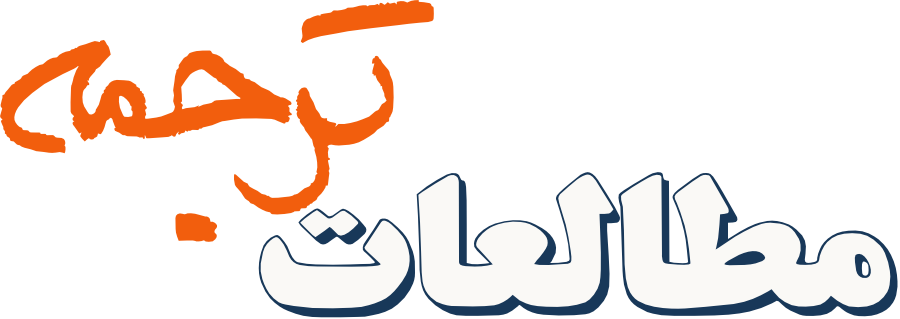تحلیل شبه-ترجمه در کتابهای دکتر شریعتی
چکیده
زمانیکه متنی بهعنوان ترجمه ارائه شود اما در برابر آن هیچ متن معادلی بهعنوان منبع در زبان دیگری وجود خارجی نداشته باشد پدیدۀ شبه-ترجمه ظاهر میشود (توری 199۵، ص. 47). نمونهای از این قضیه در نوشتههای دکتر علی شریعتی مشهود است که در آنها برخی قسمتها به نقل قولهایی از پرفسوری به نام شاندل نسبت داده شده در حالیکه، همانگونه که در این مقاله نشان داده خواهد شد، این بخشها را خود دکتر شریعتی نوشته است. بهمنظور ارزیابی این ادعا از دیدگاه علمی چهار کتاب از نوشتههای دکتر شریعتی بهعنوان دادههای این تحقیق انتخاب شد و با استفاده از تکنیکی به نام «نمودار کنترل جمع تجمعی» سبکِ نوشتههای دکتر شریعتی و پرفسور شاندل مورد تجزیهوتحلیل قرار گرفت. نتیجۀ این بررسی نشان داد شریعتی از راهکار شبه-ترجمه در کتابهای خود استفاده کرده و آنچه را بهعنوان ترجمهای از نوشتههای شاندل معرفی کرده درواقع نوشتههای خودش بوده است. دلیل این اقدام هم حاکم بودن شرایط سیاسی خاص آن زمان است که او را برآن داشته برای پرهیز از بازجوییهای سیاسی و عواقب آن هویت نویسندۀ واقعی را پنهان نماید.
کلمات راهنما:
ترجمه, شبه ترجمه, تکنیک نمودار کنترل جمع تجمیعی, کتاب های دکتر شریعتیمراجع
Apter, E. (2005). Translation with no original: Scandals of textual reproduction. In S. Berman & M. Wood (Eds.), Nation, language and ethics of translation (pp. 159–174). Princeton University Press.
Baker, M. (Ed.). (1998). Routledge encyclopedia of translation studies. Routledge.
Baker, M., Saldanha, G. (Eds.). (2009). Routledge encyclopedia of translation studies (2nd edition). Routledge.
Browne, E. G. (2006). The Persian revolution of 1905–1909 (2nd edition). Mage Publishers
Dehcheshmeh, M. M. (2013). Pseudotranslation as a subset of the literary system: a case study. TranscUlturAl a journal of translation and cultural studies, 5, 134–158. Retrieved from: http://ejournals.library.ualberta.ca/index.php/TC" http://ejournals.library.ualberta.ca/index.php/TC
Farringdon, M.G. (1992). The case of the Philosophy Department documents: Two anonymous documents analyzed and compared with a letter by Cumulative Sum stylometry.
Farringdon, M.G. & Morton A. Q. (1990) Fielding and the federalist. Technical report CSC 901R6, University of Glasgow.
McCall, I. (2006). Translating the pseudotranslated: Andrei Makine’s La ‘fille d’un Heros de l’Union Sovietique. Forum for Modern Language Studies, 42 (3), 286–297.
Merino, R., & Rabadán, R. (2002). Censored translations in Franco’s Spain: the TRACE Project—Theatre and fiction (English-Spanish). TTR: Traduction, Terminologie, Rédaction, 15(2), 125–52. Retrieved from: http://www.erudit.org
Mollanazar, H. (2011). Text screening (Censorship) in Iran: A historical perspective. Iranian Journal of Applied Language Studies. 3(2), 159–186.
Morton, A.Q. (1991). Proper words in proper places. Technical Report 91/R18, University of Glasgow, Computing Science Department.
Morton, A. Q. & Michaelson, S. (1990). The Qsum plot. Technical Repo CSR–3–90, University of Edinburgh.
Nida, E. A., & Taber, C. R. (1969). The Theory and Practice of Translation. Leiden: E. J. Brill.
Okhovat, A. (2006). Mosta'ar Nevisi va Shebhe Tarjomeh. [Writing under Pseudo-name and Pseudotranslation]. Tehran, Iran: Ney Publishing Co.
Popovič, A. (1976). Dictionary for the analysis of literary translation. Edmonton: University of Alberta.
Pursglove, G. (2011). Fakery, serious fun and cultural change: some motives of the pseudo-translator. Hermeneus, 13, 151–176.
Pym, A. (1998). Method in translation History. Manchester: St. Jerome.
Pym, A, Shlesinger, M, & Simeoni, D. (Eds). (2008). Beyond descriptive translation studies: investigations in homage to Gideon Toury. Amsterdam/Philadelphia: John Benjamins.
Rambelli, P. (2009). Pseudotranslation. In M. Baker and G. Saldanha (Eds.). Routledge Encyclopedia of Translation Studies. (pp. 208–211). London/ New York: Routledge.
Rastegar, K. (2007). Literary modernity between the Middle East and Europe: textual transactions in nineteenth-century Arabic, English, and Persian literature. London & New York: Routledge.
Rizzi, A. (2008). When a text is both a pseudotranslation and a translation: The Enlightening Case of Matteo Maria Boiardo (1441–1494). In A. Pym et al. (Eds). Beyond Descriptive Translation Studies: Investigations in Homage to Gideon Toury (pp. 152–162). Amsterdam/Philadelphia: John Benjamins.
Robinson, D. (1998). Pseudotranslation. In M. Baker (Ed.). Routledge encyclopedia of translation studies (pp.183–185). London/ New York: Routledge.
Shariati, A. (1967). Sher chist? Ghesmati az adabiat chist [What is poetry? A section taken from ‘what is literature’]. Retrieved from: http://javadeatefeh.blogfa.com/post/441 and http://javadeatefeh.blogfa.com/post/442
Shariati, A. (2007). Fatemeh Fatemeh ‘ast [‘Fatemeh is Fatemeh’]. Karaj, Iran: Dare Danesh.
Shariati, A. (2008). Haj [Pilgrimage to Mecca]. Tehran, Iran: Majjid.
Shariati, A. (2010b). Goftogohaye tanhai [Conversations in loneliness]. Tehran, Iran: Didar.
Shariati, A. (2010a). Kavir [Desert]. Mashhad, Iran: Iran-javan.
Shariati, S. (2013). Kodam man? Shariati ya Chandelle [Which one is me? Shariati or Chandelle]. Retrieved from: http://drshariati.org/?p=1529
Tahir-Gürcağlar, Ş. (2008). Sherlock Holmes in the Intercultural: Pseudotranslation and Anonymity in Turkish Literature. In Pym, A et al (Eds.), Beyond Descriptive Translation Studies (pp. 133–152). Amsterdam/Philadelphia: John Benjamins.
Tahir-Gürcağlar, Ş. (2010). Scouting the borders of translation: pseudotranslation, concealed translations and authorship in twentieth-century Turkey. Translation Studies, 3(2), 172–187.
Taves, E. H. (1991). This is the Place: Brigham Young and the New Zion. Buffalo, NY: Prometheus books.
Toury, G. (1984). Pseudotranslation. In Baker, M., Saldanha, G. (Eds.), Routledge Encyclopedia of Translation Studies (p.83). London/New York: Routledge.
Toury, G. (1995). Descriptive translation studies and beyond. Amsterdam/Philadelphia: John Benjamins.
Toury, G. (2005). Enhancing cultural changes by means of fictitious translations. In E. Hung (Eds.). Translation and cultural change (pp. 3–17). Amsterdam/Philadelphia: John Benjamins.
Toury, G. (2012). Descriptive Translation Studies—and Beyond, Revised edition. Amsterdam/Philadelphia: John Benjamins.
چاپشده
ارجاع به مقاله
شماره
نوع مقاله
مجوز
Copyright Licensee: Iranian Journal of Translation Studies. This article is an open access article distributed under the terms and conditions of the Creative Commons Attribution–NonCommercial 4.0 International (CC BY-NC 4.0 license).





